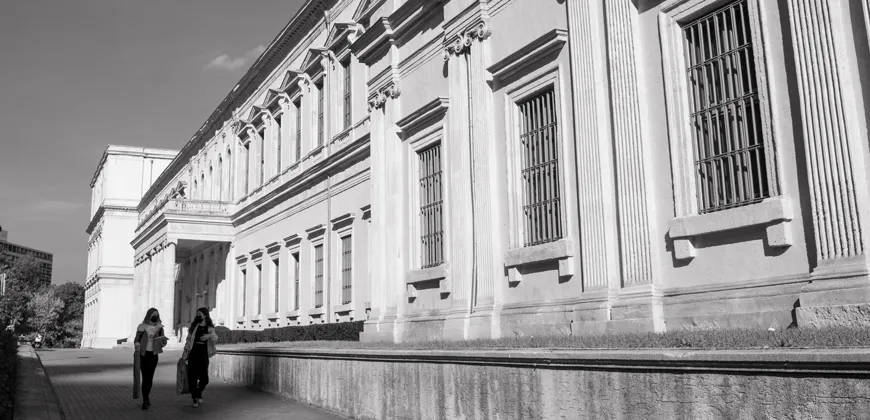Proposing retrofits to an historic building in Istanbul
For her capstone project in the High Performance Buildings program, Ezgi Yuruk H. offered more than a dozen suggestions for upgrading and retrofitting a 170-year-old building in Istanbul that is home for Istanbul Technical University’s Faculty of Architecture.

Students in the Master of Engineering Leadership (MEL) in High Performance Buildings complete two capstone projects, with the first focusing on strategies to make an existing building more energy efficient.
Ezgi Yuruk H. chose a building she knew well from her undergraduate education: Taskisla, the historic building for the Faculty of Architecture at Istanbul Technical University. Taskisla was constructed in the Renaissance Revival style, and has served many purposes over its 170-year history – including as a military barracks and a military hospital – before being repurposed for the university in the late 1950s.
“There are many older buildings like this in Istanbul that have been overlooked for green retrofits,” says Ezgi.
Since Ezgi was not able to access current energy performance data for the building, her analysis and recommendations focused more broadly on the strategies that could be implemented to make the building more efficient, reduce operational greenhouse gas emissions, improve water usage and enhance the thermal comfort level of the building’s users.
A holistic approach to building performance
She began by conducting research on historic buildings around the world that had been retrofitted to improve energy performance, and then grounded her recommendations on her analysis of Taskisla’s existing conditions, including relatively recent maintenance and repair work on its facade.
Energy efficiency
Given the historic nature of the Faculty of Architecture’s building, she did not suggest any exterior modifications, recognizing that options to improve efficiency would need to come through other ways. “I suggested adding another layer of insulation to the interior walls. Also, given that the stone walls are very thick, I recommended adding a second layer of windows. Many student studios have a lot of daylight glare, which is problematic. Installing a second and more high-efficiency window on the interior side with shadings between two window layers would prevent glare while making the building more energy efficient and the interior temperature more comfortable for students.”
Increased ventilation
Another area she identified for improvement was airflow, which she recommended increasing by adding an extension to the building’s courtyard. “Doing this would add a stack effect to the building for increased natural ventilation, in line with passive house practices.”

Water management
Other options Ezgi proposed to make the building more efficient included installing photovoltaic panels or a geothermal heat pump to meet hot water and heating needs.
Her holistic approach to building performance led her to recommendations touching on water management – including collecting rainwater to be used as grey water in toilets – waste management, fire safety and LED lighting. Her report includes a matrix outlining 17 renovation options, ranked by their cost and potential impact on reducing energy use and greenhouse gas emissions.
Career opportunities
Before moving to Vancouver in 2021 to pursue the MEL in High Performance Buildings, Ezgi was employed as an architect for a construction company.
“My work was primarily based in Algeria, where I was the site architect and design office chief for several hospital projects. Given the desert conditions, this experience made me appreciate the importance of façade and closure performance.”
It also motivated her to learn more about sustainable building practices. “The construction industry is one of the most significant contributors to waste and an extremely large source of energy emissions. I want to find ways to improve that.”
Ezgi landed a job at a local Vancouver firm even before graduating in December 2021. She is now working as a sustainability analyst at Integral Group, which provides building system design and energy analysis services to clients in North America, Europe and Australia. As a junior sustainability analyst with the firm, she is focusing on whole-building life-cycle assessment and calculating the embodied carbon in construction projects to ensure compliance with building certifications and codes.
“I would definitely recommend the MEL to others,” she says. “You won’t find anything else of this quality in this short period of time. It’s extremely demanding, but it takes only one year out of your professional career and you learn so much.”



